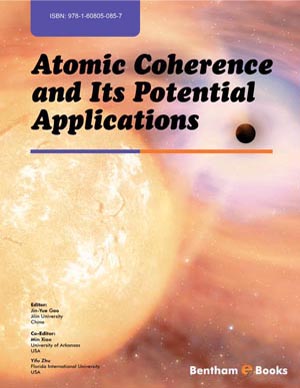Abstract
Linear absorption and dispersion properties, as well as Kerr nonlinear index, of three-level atomic systems can be greatly modified under the condition of electromagnetically induced transparency (EIT). By placing such EIT atoms in a vapor cell inside an optical ring cavity, the cavity transmission spectrum can be altered and controlled. We show that the cavity transmission linewidth can be narrowed substantially comparing to the empty cavity linewidth due to the sharp normal (linear) dispersion associated with the EIT resonance (which can be considered as photons traveling with a slower speed inside the optical cavity). On the other hand, the Kerr nonlinear dispersion has the opposite slope comparing to the linear dispersion near the EIT resonance, which can be used to balance the linear dispersion and lead to total anomalous dispersion for the intracavity atomic medium (with ``superluminal photon speed'' inside the optical cavity). Such anomalous dispersion in the intracavity medium makes the cavity transmission linewidth broader than the empty cavity linewidth. Under certain parameters, the so called ``white-light cavity'' condition can be satisfied, which makes the cavity transmission linewidth very broad and, at the same time, have high cavity transmission. Such modified and controlled cavity transmission linewidths can have many interesting applications in frequency locking, cavity ring-down spectroscopy, nonlinear optical spectroscopy, cavity-QED, and even recycling cavity of the gravitational-wave detector.













